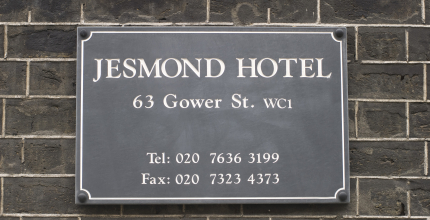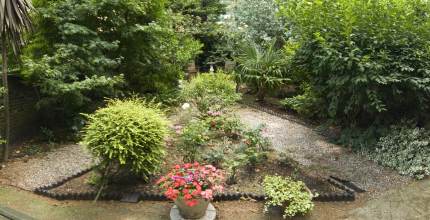The Shivaprasad family
The Jesmond Hotel was run by the Beynon family for 44 years since 1979, and the Shivaprasad family are delighted to continue their legacy of a family-run atmosphere, which is what we hope will make you feel so welcome.
The building
On the 1st August 1786, an industrious time for house building in the middle of an era now referred to as the Georgian period, a builder of the time, Mr Alexander Hendy was given a contract by Gertrude Duchess of Bedford to build 13 houses on a vacant plot of land. This contract was the contract that contained the building of 63 Gower Street within the terrace now seen today. To the north, Francis Street, now renamed as Torrington Place, and to the west, Chenies Mews, now renamed as Ridgemount Gardens were also constructed.
Details of the building style were largely pre-determined by the already existing buildings in the near surrounding areas, and more closely those already built at the north end of Gower Street. The old English language used in the building contract now held at Woburn Abbey, home to the Duke of Bedford, describes the requirements put upon the builder by the freeholder selling the land;
“Thirteen other uniform houses to front Gower Street aforesaid the said several houses and the front thereof with the windows therin to range in a line and be regular in all respects and correspond with the houses already built in Gower Street.”
The reference to the “regular” style of the building, and the fact that these new buildings should “correspond with the houses already built in Gower Street”, gives an indication into the demands of architecture and construction at that time.
The façade of the Jesmond Hotel is a key identifier for the Georgian style in many ways, including the six paneled main front door, sash windows, parapet wall concealing the majority of the roof from street level (Georgian architects and builders considered roofs to by ugly and functional), and Flemish bond brickwork. The bricks used were London stock brick. The original colour of these bricks can be seen at the rear of the property from the garden. The black colour of the bricks now seen at the front of the building is as a result of many years of pollution, at its peak in London during the Victorian period and not as many would assume in recent years.
The property also represents a typical proportioning building style adopted by the Georgians at the end of the 18th Century. The narrow band at the bottom of the first floor windows divides the ground floor from the rest of the property. Above the second floor windows, and below the parapet wall is the large section of stucco decoration.
It is in that way the property complies with a uniformity that is the hallmark of Georgian architecture and building techniques from that period.


